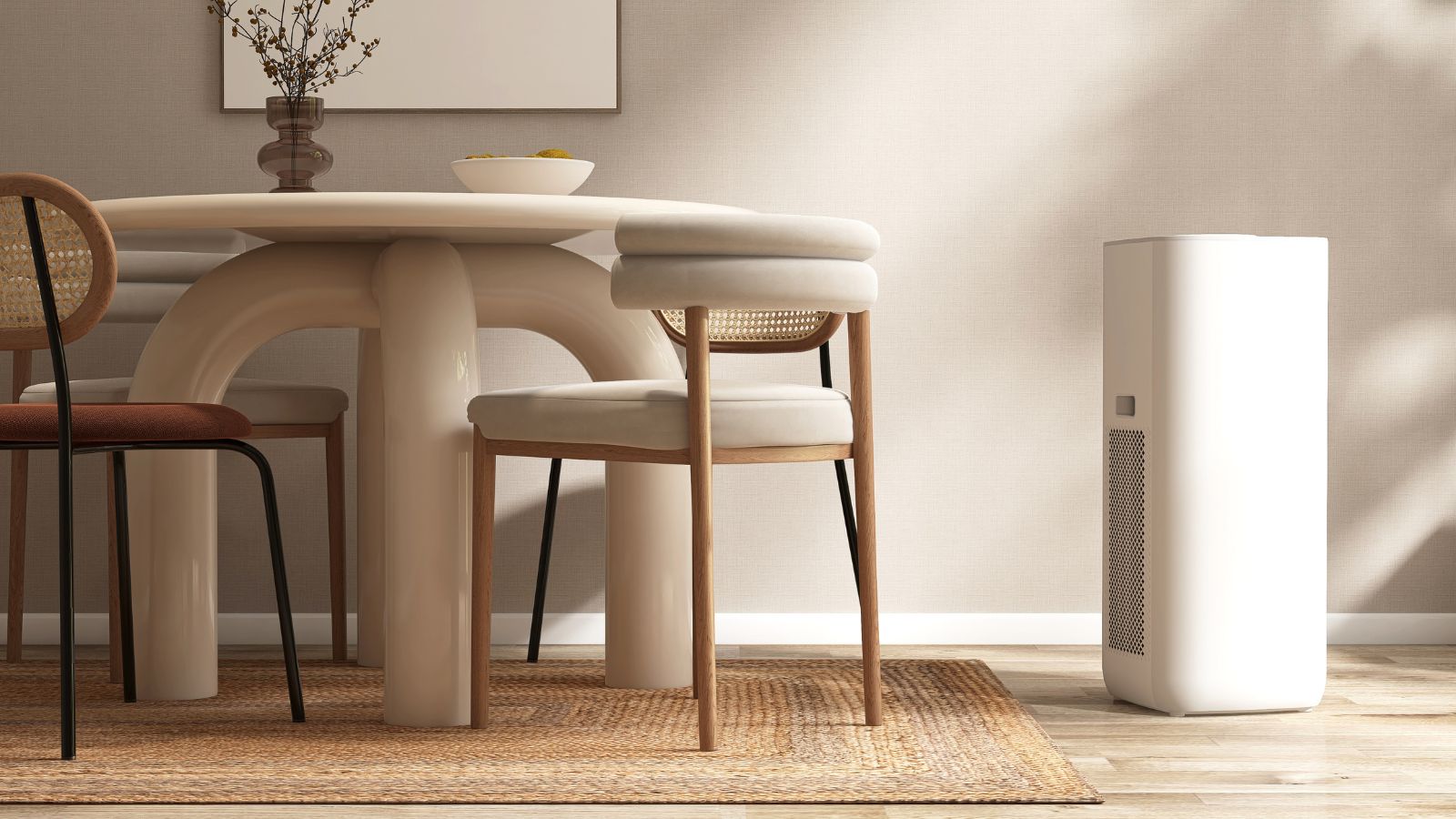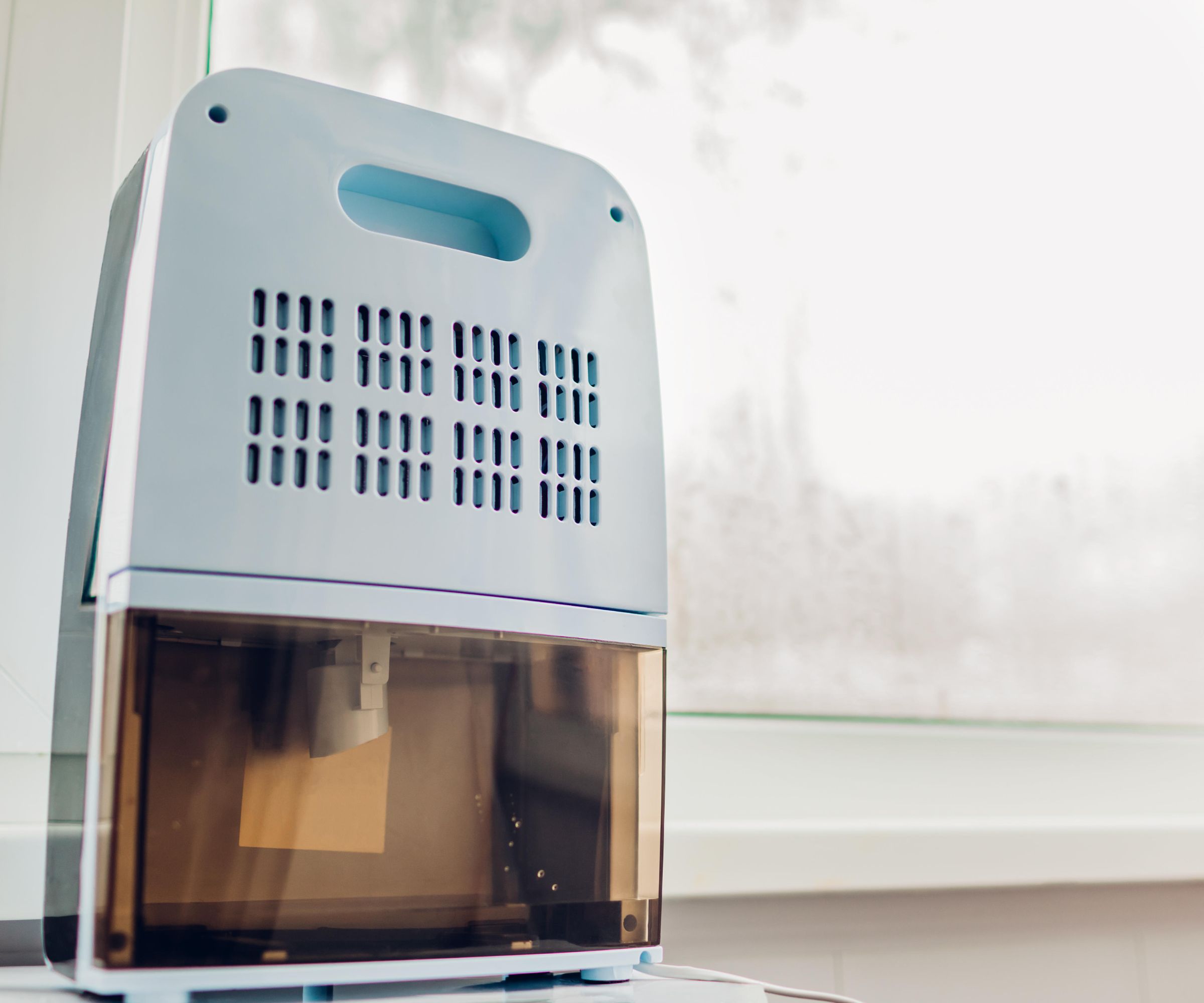How to clean a dehumidifier in 6 simple steps – prolong your unit's lifespan and efficiency
Cleaning your dehumidifier regularly is key to ensuring it is long-lasting and performs optimally


A dehumidifier can accumulate bacteria, dust, and other particles from the air which means it can quickly become dirty, and begin to operate less effectively.
Keeping your dehumidifier clean not only prolongs its life but also ensures it operates efficiently, helping to maintain the desired humidity level in your home. This can prevent mold growth and reduce allergens in the air, contributing to a healthier indoor environment.
Our experts have shared six simple cleaning tips for your dehumidifier. By adopting these as part of your regular cleaning routine, you can maintain the best humidity levels in your home year-round.
How to clean a dehumidifier
'A dehumidifier helps regulate the humidity of a room by maintaining and controlling the air present in the area. It is made up of different parts that should be cleaned regularly so that the dehumidifier can work properly and effectively,' explains Rocky Vuong, cleaning expert and Founder of Calibre Cleaning.
Specialized cleaning products aren't usually required when cleaning a dehumidifier. Simple household items, including mild detergent, water, a sponge, a brush, a cloth, and a vacuum cleaner should be sufficient for regular maintenance. If mold or mildew is present, you can also use vinegar to kill mold and remove contaminants more effectively.
1. Prepare the dehumidifier

Before cleaning, always unplug your dehumidifier from the power source and allow it to cool down. Then, carefully disassemble the unit according to the manufacturer's instructions.
2. Clean the filter
The air filter is an important component of a dehumidifier, responsible for trapping dust particles and other impurities in the air. Over time, these filters can become clogged with dirt and debris, ultimately affecting the efficiency of your dehumidifier.
Design expertise in your inbox – from inspiring decorating ideas and beautiful celebrity homes to practical gardening advice and shopping round-ups.
There are various types of dehumidifier filters depending on the model you have, including reusable, washable, built-in, and disposable filters. These might have distinct maintenance needs and cleaning requirements, so before cleaning, check which type of filter your dehumidifier has. Then, remove and clean the filter according to the manufacturer's instructions.
In most cases, you can gently vacuum the filter to get rid of all the dirt and dust. Some filters can then be rinsed or washed with warm water and a mild detergent. Allow the filter to dry completely before reinserting it into the unit.
As well as cleaning your dehumidifier regularly, you should also know how often to change a dehumidifier filter to keep it running efficiently. This will depend on how much you use it, indoor humidity levels, air quality, and the filter type.
3. Clean the water tank

'The tank gathers all the water that is extracted from the air,' explains Rocky Vuong. 'Because of this, it's likely that mold or mineral deposits might have accumulated in this section if not cleaned regularly.' So, be sure to clean and sanitize the tank about once a week to prevent mold and bacteria growth.
To do this, drain the tank and clean it using a sponge with mild detergent and water. Be sure to reach into crevices and corners to remove any mold, dirt, and bacteria completely. There are ways to reuse dehumidifier water, so collect it in a jug or bowl rather than pouring it down the sink.
After cleaning, you can spray the tank with a vinegar and water mixture to sanitize it. Let it sit for a minute until it dries, then thoroughly rinse the tank with water to remove any vinegar residue.
Hula Home Continuous Spray Bottle | Was $14.99, now $7.99 at Amazon
This handy spray bottle is perfect for mixing simple DIY cleaning solutions and applying them to your dehumidifier.
HARRIS Cleaning Vinegar | $23.50 from Amazon
Cleaning with vinegar is effective for more than just your dehumidifier, so investing in a large quantity is a smart addition to your cleaning supplies. This best-seller has been created with Eucalyptus oil to help neutralize odors.
4. Vacuum the air intake and exhaust grills
'Dust can accumulate on the air intake and exhaust grills, affecting the unit's efficiency,' explains HVAC technician and the owner of Air Conditioner Lab, Josh Mitchell. 'Use a vacuum with a brush attachment to gently remove dust from these areas.'
5. Check and clean the coils and fins
The coils and fins of the evaporator and condenser are another essential part of a dehumidifier, responsible for removing moisture from the air. Over time, these can become coated with dust and dirt, reducing their effectiveness.
'To clean the coils and fins, you can either use a soft brush or a vacuum cleaner that has a brush attachment,' advises Polya Petrova, a cleaning professional at Fantastic Services. 'During the cleaning process, be careful not to bend or damage the delicate fins.'
6. Wipe down the exterior

While cleaning the inner workings of your dehumidifier is vital, don't forget about the exterior!
'Use a damp cloth to wipe down the exterior surfaces of the dehumidifier, including the control panel and casing,' advises Polya Petrova, professional cleaner. 'Avoid using harsh chemicals or abrasive cleaners that could damage the finish.'
You can also use a mild cleaning solution to spot-clean the affected areas for stubborn stains. Just be sure to avoid getting any liquids inside the device.
FAQs
How often should you clean a dehumidifier?
'You can maintain optimal performance at all times by cleaning your dehumidifier once every two weeks during periods of high humidity,' recommends Henrique Conceicao, Area Manager at Total Clean. 'For less humid conditions, a monthly cleaning routine should suffice.
You should also perform a deep cleaning of your dehumidifier once a year to remove built-up grime and residue.
How do you prevent mold build up in a dehumidifier?
'You can prevent future mold and bacteria buildup in your dehumidifier by emptying the water collection bucket as soon as possible to prevent standing water,' advises Henrique Conceicao. 'You should also ensure the area around the dehumidifier is well-ventilated if you want to discourage further mold growth.
In addition to cleaning, perform regular maintenance checks on your dehumidifier, such as inspecting for signs of wear or damage, checking the fan and motor, ensuring proper airflow, and inspecting the drainage system for any clogs or blockages. If you notice any problems it's best to contact a professional for the best solution in order to extend the longevity of your dehumidifier.

Lola Houlton is a news writer for Homes & Gardens. She has been writing content for Future PLC for the past six years, in particular Homes & Gardens, Real Homes and GardeningEtc. She writes on a broad range of subjects, including practical household advice, recipe articles, and product reviews, working closely with experts in their fields to cover everything from heating to home organization through to house plants. Lola is a graduate, who completed her degree in Psychology at the University of Sussex. She has also spent some time working at the BBC.

